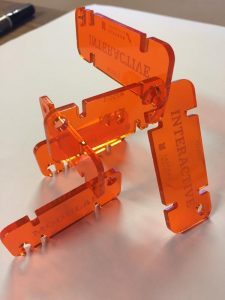Did you miss Learning Technologies this year? Or perhaps the whole mêlée was so overwhelming that you’re still struggling to process some of the great ideas you saw in action? Either way, there’s no need to worry. Here’s four of our favourite trends and highlights from the event. It’s almost as good as being there, and you needn’t leave the comfort of your desk!
1. There’s more to social learning than social networks
Social learning isn’t just a link to share content on Twitter. The idea of social learning as an instructional design and development style rather than a few links included as an afterthought was a key feature this year. We showcased Saffron Share, a platform that takes the techniques used by some of our favourite websites to engage learners with activity feeds and personalised dashboards. Keynote speaker Robert Winston’s thoughts on social learning led to one of the most retweeted Tweets of the entire conference, highlighting the importance of this issue:

2. Serious games should all be about behaviour
‘Gamification is always a draw’- but this year marked the start of a deeper conversation. People wanted to know the real impact on behaviour these games would have. Gamified and animated cooking tutorials were popular, and so was our Bribery Act Challenge, which places learners in realistic scenarios to equip them with the confidence and capability to take action and alter their behaviour. Furthermore, the popularity of seminars which referenced not just the creation, but also implementation and follow up of game- based learning affirmed gamification’s status as a learning approach with gravitas.
3. An LMS can be so much more
Rumours of the death of the LMS have been greatly exaggerated, as it was put in several appearances at this year’s event (albeit in a number of guises). But the realisation that when done correctly, a learning ‘platform’ can be so much more than an LMS was something that got people talking at this year’s Learning Technologies. According to an exit poll, many of the top rated seminars were centred on learning content and platforms as part of a wider strategy and cultural shift towards learning technologies within an organisation. Seeing the bigger picture in this way is a vital first step towards improving the quality of learning platforms as a vital component of any L&D strategy in their own right, rather than a mere repository for content.
4. Personalised learning
Our Open IBC platform showcased how leveraging social context and a great user experience can make your learning platform somewhere that’s alive and capable of engaging learners with self-directed learning paths, rather than hostile-looking compliance courses. As part of our seminar on the platform, we gave attendees and visitors to our stand the chance to redefine elearning by building blocks to create a model representative of what elearning should be. Here are the some pictures of the best bits (you can also take a look at case study about our work with IBC here):

In the lab getting ready to redefine performance #lt15uk

Our first model! eLearning should be… interactive, modular, fun #performanceredefined #lt15uk

“Playtime! Thanks @saffronint for letting us ‘interact’ with their seminar”

Learning that’s prestigiously personalised is central to redefining performance #lt15uk

Some people got rather carried away with the ‘#performanceredefined’ building concept!
Some of the most popular words people used to describe their thoughts on elearning were ‘social’, ‘gamification’ and ‘exciting’. Our activity showed how we’re all looking to mould and redefine learning technologies in some way to create something unique to the needs of each learner.
So although Learning Technologies might be over for another year, these four trends certainly offer food for thought about the future of the industry. If you’re interested in finding out more about how we transform the performance strategy of the organisations we work with, or you’d like to take a look at some of the demos I’ve mentioned in this post, get in touch.




